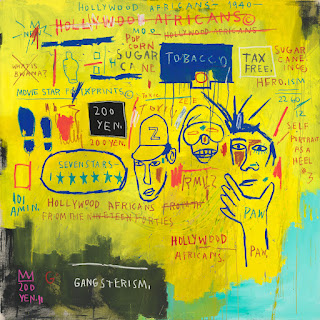ARTIST REPORT : JEAN MICHEL BASQUIAT
JEAN MICHEL BASQUIAT
Jean-Michel Basquiat, born in Brooklyn in 1960, established himself as a key figure in the New York art scene of the 1980s. With a Haitian father and Puerto Rican mother, Basquiat's diverse heritage has influenced his artistic vision. Starting out as a graffiti artist under the pseudonym SAMO, he quickly moved into the gallery scene, blending graffiti with neo-expressionism and primitivism. His work is characterized by a raw, vibrant style and themes addressing race, identity and social commentary, capturing the complexities of the human condition. Despite the brevity of his career, which ended with his untimely death at the age of 27 in 1988, Basquiat left an indelible mark on contemporary art.
Jean Baudrillard's “Simulations”, a philisophical work on hyperreality, explores how reality is constructed and perceived in a world saturated with media and symbols. Baudrillard argues that in a postmodern society, the lines between reality and simulation become blurred, creating a hyperreality where the distinction between the real and the simulated becomes indistinguishable.
Basquiat's art intersects with Baudrillard's theories, questioning the boundaries between reality and simulation. His works, such as “Untitled (Skull)” and “Hollywood Africans”, confront the viewer with fragmented, layered imagery that questions the authenticity of cultural symbols and narratives. By incorporating elements of pop culture, historical references and personal symbolism, Basquiat creates a hyperrealist visual language that reflects Baudrillard's concept of a world where signs and symbols replace the real.
 |
| Hollywood Africans (1983) |
 |
| Untitles Skull (1981) |
In this context, Basquiat's art becomes a powerful commentary on the simulated realities of contemporary society, making his work “more real than the real thing” as it reveals deeper truths about identity, consumerism and the human experience in a hyperreal world.

Commentaires
Enregistrer un commentaire